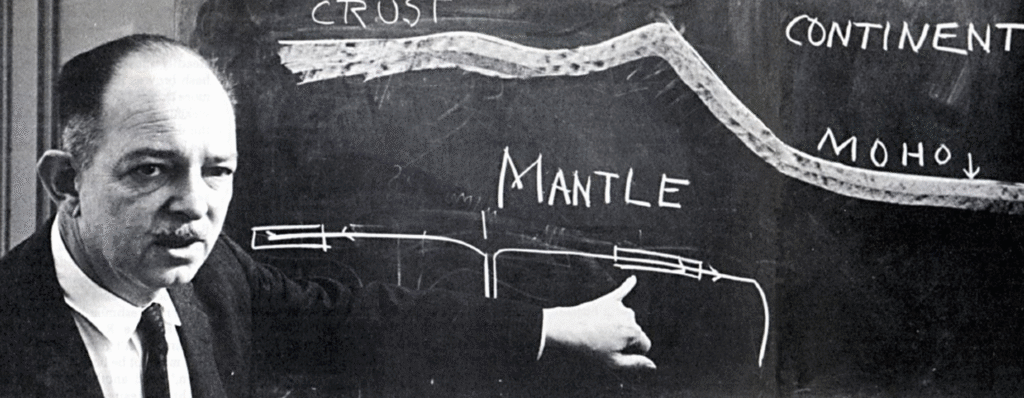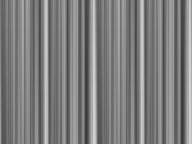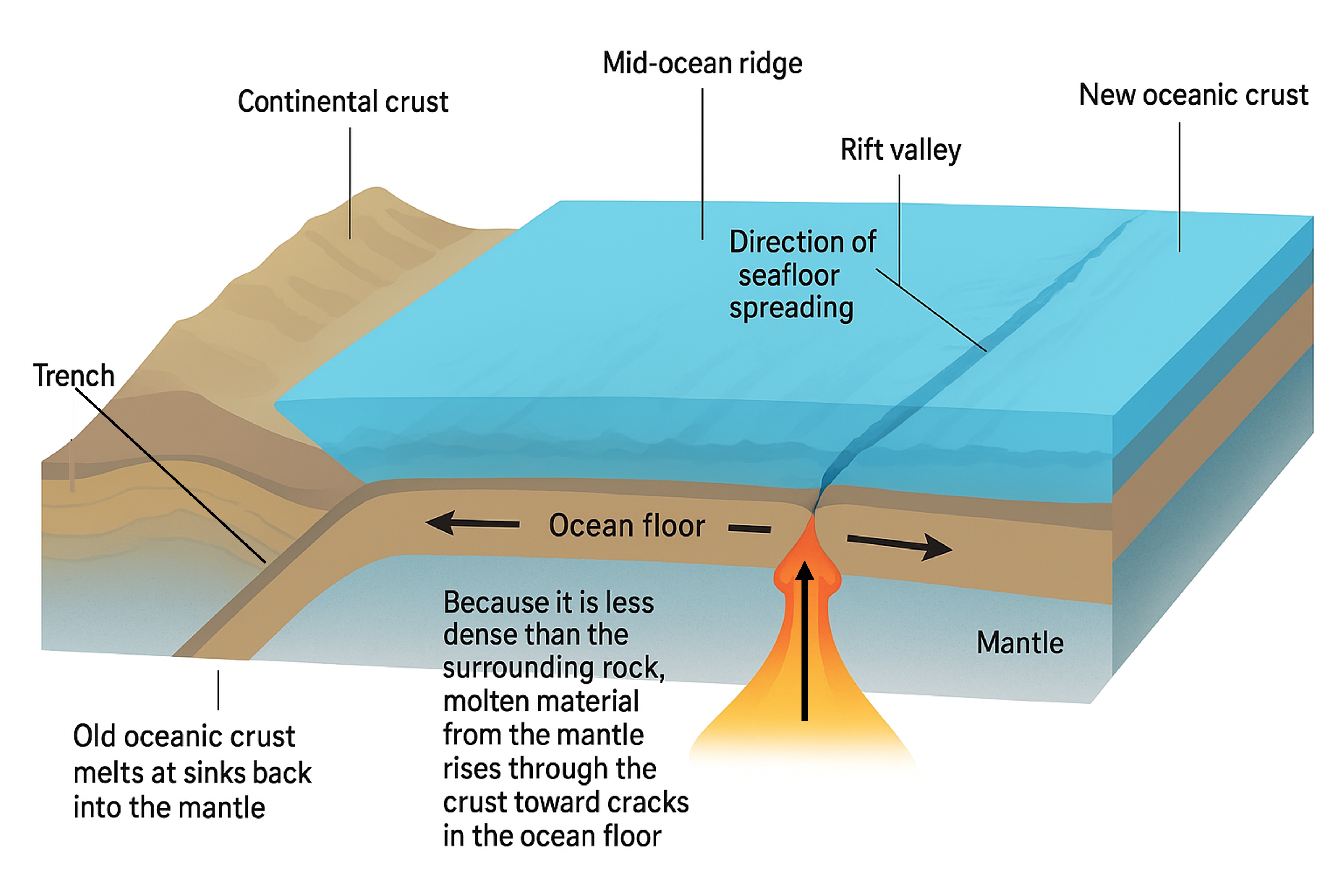The Seafloor Spreading theory explains how new oceanic crust is created at mid-ocean ridges and then moves away from the ridges. This process, driven by convection currents in the mantle, provides the mechanism for continental drift and is a cornerstone of the modern theory of plate tectonics.
The Concept of Seafloor Spreading
In the early 1960s, geologist Harry Hess proposed that the seafloor itself moves as it expands from a central axis. This process, called seafloor spreading, occurs at mid-ocean ridges. When the convection currents’ rising limbs pull the oceanic plates apart, tensional stress creates fractures in the lithosphere. Basaltic magma from the mantle rises through these fractures, erupts, and cools on the ocean floor to form new oceanic crust. This new crust pushes the older crust away from the ridge.
- Formation of New Crust: As magma rises and solidifies at the mid-ocean ridge, it creates new seafloor.
- Movement of Crust: The older rocks are pushed farther away from the spreading zone, while the youngest rocks are found right at the ridge. This continuous process explains how the ocean basins grow wider over geologic time.

How and When the Observations Were Made

The key observations that led to the theory of seafloor spreading were made primarily in the 1950s and early 1960s, driven by technological advances from World War II.

- Discovery of Mid-Ocean Ridges and Trenches: During and after World War II, sonar technology was used to map the ocean floor in unprecedented detail. This process, called bathymetry, revealed that the seafloor was not a flat, featureless plain. Instead, scientists discovered a massive, continuous underwater mountain range, now known as the mid-ocean ridge system. At the same time, they also found very deep, narrow canyons called deep-ocean trenches.
- Discovery of Magnetic Stripes (Palaeomagnetism): In the mid-1950s, scientists towing highly sensitive magnetometers (originally developed to detect submarines) across the ocean floor discovered an astonishing pattern. They found alternating bands of high and low magnetic intensity, creating a symmetrical, zebra-like pattern on either side of the mid-ocean ridges. This pattern was a direct result of the Earth’s periodic magnetic field reversals being “frozen” into the newly forming rock at the ridge crest.
- Age of Ocean Floor Rocks: Through ocean-drilling programs in the late 1950s and 1960s, scientists were able to collect rock samples from the seafloor. Analysis of these core samples revealed that the youngest rocks were always found at the mid-ocean ridges, and the rocks became progressively older the farther away they were from the ridge. This provided irrefutable proof that new crust was being created at the ridges and spreading outwards.

How magnetism helped understand the concept of Sea Floor Spreading:

The process begins with a magma chamber deep beneath the surface, which is the source of the molten rock.
- Rising Magma: Hot, molten rock from the magma chamber rises due to convection currents within the mantle. As the magma approaches the surface, it exerts immense pressure on the overlying lithosphere.
- Rifting and Eruption: This pressure causes the lithosphere to fracture and pull apart in a process known as rifting. The magma then rises through these fractures and erupts onto the seafloor, forming a new volcanic ridge.
- Spreading and Solidification: The newly erupted magma cools and solidifies, adding new rock to the sides of the ridge. This new rock pushes the older crust away from the central ridge in both directions, as indicated by the large grey arrows.
- Symmetrical Pattern: As this process continues, a symmetrical pattern of rock layers is created on either side of the ridge. The darkest red and orange colours represent the youngest rock, located right at the centre of the ridge, where the magma is erupting. The lighter orange and brown layers represent older rock that has been pushed farther away over time. This continuous cycle of magma rising, solidifying, and pushing the lithosphere outward is what causes the mid-ocean ridges to grow and expand.
